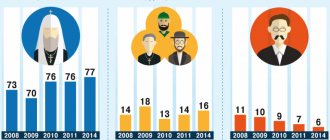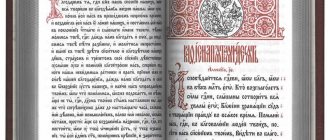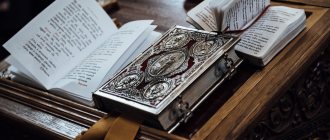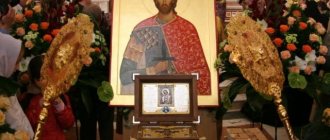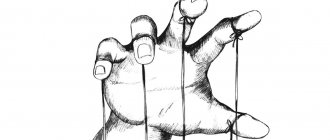“Faith Index”: how many Orthodox Christians are there really in Russia?
People simply see value for themselves in Orthodoxy, and therefore consider themselves part of it. It’s a different matter when it comes to their churchliness, says Joseph Diskin, deputy chairman of the scientific council of VTsIOM, head of the Commission of the Public Chamber of Russia for the harmonization of interethnic and interreligious relations. The situation is similar with Muslims, of whom, according to the Council of Muftis of Russia, there are more than 20 million in the country: not all of them, for example, fast during the month of Ramadan. But these figures often become an argument in property claims.
“We, by the way, have a secular state, which is designed to protect the interests of both agnostics and atheists, and believers. Therefore, when a demand is made to provide land (for a chapel - Ed.), let's look at the size of the registered communities. At the same time, believers often really don’t have enough space,” notes Diskin.
"Part of Civilization"
The Russian Orthodox Church does not see a big problem in the fact that, according to statistics, 80% are Orthodox, only two-thirds of them believe in God, and only 4% observe fasts and go to churches.
“Any company that conducts sociological surveys uses its own calculation method. This methodology, which can be backed by entire scientific schools, produces results that most often do not coincide,” notes Vakhtang Kipshidze, deputy head of the Synodal Department of the Moscow Patriarchate for relations between the Church and society and the media.
“I don’t think this figure (80%) raises any questions. And here’s why: in many countries, not only in Russia, people associate themselves with one or another religious denomination, religious community, not only strictly in a doctrinal sense, but also in a cultural sense. Probably, in any state where this or that religious community has existed for a long time - several centuries or millennia - belonging to it also has a civilizational character. Therefore, when a person calls himself Orthodox, he only testifies that Orthodox civilization is a value that forms part of his identity,” he argues.
Quantity or quality?
However, in this regard, the question arises: is it necessary at all for there to be many believers? Perhaps it is much more important for denominations to have a small but faithful flock than public popularity.
“It is incorrect to build a contrast between the quantity and quality (of believers - editor's note) only based on formal assessments. A person can go to church for decades and know all the church rituals perfectly and participate in the sacraments. But if at the same time he does not become purer, kinder and holier, then this does not at all mean that Divine grace is effective on him. For example, the so-called “church index,” which was once invented by sociologist Valentina Chesnokova, or the church criterion itself—they are all external markers. And the meaningful markers are known only to the confessor, who directly works with the person and observes him in dynamics. Therefore, a significant increase in the percentage of those who regularly observe fasts, participate in services, and so on, is not at all a reflection of the quality of faith as such,” explains Archpriest Pavel Velikanov, rector of the Pyatnitsky metochion of the Trinity-Sergius Lavra, associate professor of the Moscow Theological Academy.
Culture and science
How many adherents of the Orthodox cult are there really in Russia? Many claim that it is about 80% or even more. But one point is important here: is it really about Orthodoxy? People who simply call themselves Orthodox are not necessarily Orthodox. And in this case, it is interesting how many truly Orthodox there are in Russia, that is, people who regularly attend religious institutions, know dogma, etc., that is, meet all the requirements of the Russian Orthodox Church.
How many Orthodox are there in Russia?
14.12.2016
How many adherents of the Orthodox cult are there really in Russia? Many claim that it is about 80% or even more. But one point is important here: is it really about Orthodoxy?
People who simply call themselves Orthodox are not necessarily Orthodox. And in this case, it is interesting how many truly Orthodox there are in Russia, that is, people who regularly attend religious institutions, know dogma, etc., that is, meet all the requirements of the Russian Orthodox Church.
A few quotes from churchmen:
“more than eighty percent of the current population of Russia are Orthodox believers”[1].
“The percentage of Orthodox Christians in Russia is more than 80% according to a study by Moscow State University”[2].
And there are actually plenty of similar things. Refuting this is not so difficult, since you can forget about demagoguery and turn to real research. First of all, you need to understand that since the authorities have been advertising Orthodoxy since the late 80s, and especially actively since the 90s, many people really began to identify themselves as Orthodox, but for them Orthodoxy is a synonym for the word Russian.
This situation has been relevant since the early 90s, and it has not changed to this day. Here's what happened in 1992:
“In the article “The Orthodox Church in Russia: the recent past and possible future,” Abbot Innokenty, citing data from VTsIOM, noted that in 1992, 47% of the population called themselves Orthodox. Of these, only about 10% more or less regularly attend church services (the author, as a practicing clergyman, believes that this figure is overestimated). If we talk not only about these Orthodox Christians, but also those who strive in life to conform to the standards of Christian morality, then their number even 10 years later is from 2 to 3% of the population. For the majority, this is not about religiosity, but about national self-identification: for these people, considering themselves Orthodox is a sign of their “Russianness” [3].
So the only thing that the authorities have really achieved during all this time is that people began to call themselves Orthodox, but they do not put into this concept anything related to a religious cult. Such people cannot be considered truly Orthodox, that is, supporters of a religious cult.
Why shouldn’t you use express survey data in such a topic? Because this is a simple survey where a person on the street is asked the question: “Do you believe in God?” or: “Are you Orthodox?” Often without clarification, that is, there are no questions about whether a person knows religious dogmas, prayers, whether he went to church, etc., etc.
Therefore, it is under no circumstances worth accepting this data, which priests often refer to in order to increase their own worth. Serious researchers who understood the issue never recognized the Orthodox Church as having any special authority.
Sociologist Nikolai Mitrokhin, but they also clarified what Orthodoxy really is, the results for the Russian Orthodox Church are not so good. For example, within the framework of the project “Atlas of Religions and Nationalities” a study was conducted. As a result, 41%[5] consider themselves to be members of the Russian Orthodox Church.
Here’s what’s interesting: for people, Orthodoxy is one thing, but the Russian Orthodox Church is something completely different. As soon as they ask whether the “Russian Orthodox” has anything to do with the Russian Orthodox Church, he often says that he does not, obviously understanding Orthodoxy as something of his own. And thus, half of the “more than 80%” are immediately eliminated.
Surprisingly, some researchers loyal to the Russian Orthodox Church refuted the data on the large number of church supporters, which indicate a percentage of 65 to 80%. The head of the sociological department of the Institute of Public Design, Mikhail Askoldovich Tarusin, states: “This number shows little. <…> If these data can be considered an indicator of anything, then only modern Russian national identity. But not real religious affiliation. <…> If we consider those who participate in the Sacraments of Confession and Communion at least once or twice a year as Orthodox “church” people, then the number of Orthodox is 18−20%. <…> Thus, about 60% of VTsIOM respondents are not Orthodox people. Even if they go to church, it is several times a year, as if to some kind of domestic service - to bless a cake, to take baptismal water... And some of them don’t even go then, moreover, many may not believe in God, but This is why they call themselves Orthodox.”[6].
And thus, half of 40% is already taken away. Although this person’s data is obviously also false, since even on holidays in modern Russia, churches did not attract 18-20% of the population.
Let us pay attention to observing fasting. Many Orthodox Christians do not think that this is important, but in fact it is important because every Christian should fast, including children. The Orthodox claim:
“Fasting for children is a spiritual school. They learn the precious virtue of controlling their desires.”[7]
So, let’s highlight “Great Lent”, that is:
“The central fast in all historical churches and many Protestant denominations, the purpose of which is to prepare the Christian for the celebration of Easter; also the corresponding period of the liturgical year, marked in the service by prayers of repentance and remembrance of the death on the cross and resurrection of Jesus Christ. Installed in memory of the fact that Christ fasted in the desert for forty days. The duration of Lent is in one way or another connected with the number 40, but its actual duration depends on the rules of calculation adopted in a given denomination.”[8].
It would seem that believers in Christ, if they are sincere, can easily hold out. Moreover, there is an important point here. In the Bible, fasting was understood as a general abstinence from food, but among the Orthodox, as a rule, it was simply a refusal of certain foods (with the exception of Good Friday).
How many Russians will fast? As a VTsIOM survey showed, only 3% will fully comply with this “important” post[9]. And especially it should be noted that even among these people not everyone understands what fasting is. For some it means giving up entertainment, some think it’s giving up alcohol. Well, if you give up fatty meat, then supposedly you can eat lean meat, although this is not so. That is, few people are familiar with the rules for observing Orthodox fasting. Well, the majority of Russians (77%) generally ignore the post.
What ordinary people call Orthodoxy has little in common with Orthodoxy from the Russian Orthodox Church. We are talking about folk religion. Sociologist Boris Dubin investigated the issue and came to the following conclusions:
Orthodox today
Social portrait. As B. Dubin noted, among Orthodox believers, women and older people predominate, who, as a rule, do not have a very high level of education and live outside large cities. However, the largest influx of new Orthodox Christians comes from young people, people with higher education, and men.
Level of religiosity. 60% of Orthodox Christians do not consider themselves religious people, noted B. Dubin. Moreover, he emphasized, only about 40% of Orthodox believers are confident in the existence of God, and about 30% of those who call themselves Orthodox believers generally believe that there is no God.
Involvement in religious life. B. Dubin emphasized that Russia has the lowest level of church attendance among the 15 countries studied in Europe and America. According to the data cited by B. Dubin, about 80% of Russian Orthodox Christians do not attend communion; 55% do not attend services in churches; 90% of Orthodox Christians admit that they do not take part in the activities of the Church.
Why do Orthodox Christians need their faith? According to B. Dubin, modern Orthodox believers explain their need for faith mainly by the fact that faith makes life easier and makes it easier to overcome difficulties. In the minds of citizens, the Orthodoxy they profess is not associated with any of their own responsibility and personal activity.
Thus, B. Dubin believes, a person’s classification of himself as an Orthodox Christian is only his identification at the macro level - a person feels his unity with the collective “we,” which is the Church. The sharp increase in the number of Orthodox Christians is not evidence of a real spiritual revival of the country[10].
Natalia Zorkaya, head of the socio-political research department of the Levada Center, emphasizes:
“Today the statement “I am Orthodox” rarely implies religiosity. Everyone has icons in their cars, icons in hospitals, icons everywhere. This is a mass phenomenon that does not indicate faith at all. The heads of our believers are a complete mess. The share of Orthodox Christians almost coincides with the share of the Russian population. Orthodoxy works as a substitute for ethnic identification”[11].
A study on fasting indicated that 3% intend to keep it. It is interesting that Archpriest Georgy Mitrofanov also spoke about 3%:
“For many years, our country, in the words of the classic, “was baptized, but was not enlightened.” I can even aggravate the numbers - people who receive communion at least once a year are no more than 3% of the country's population. These are those who can be called Christians. The Russian Orthodox Church had 25 years to create active parishes, but they never appeared”[12].
That is, even individual clergy (a minority) note that there are approximately 3% of Orthodox Christians in Russia. However, there are some difficulties here too. Can a person who visits a religious institution once a year or takes communion once a year be considered Orthodox? This is doubtful.
Let's look at the attendance of churches during the main church holidays. Will there be 3%? Attendance data - Ministry of Internal Affairs statistics.
How many people came to church during Easter:
2004 4.9 million 2006 5 million 2007 6 million 2008 7 million 2009 4.5 million 2012 7.1 million 2013 4 million
In 2021 - 4 million[13].
This is 2.7% of the population of the Russian Federation. However, there is one important point to consider here. The fact is that many of these people come to church only on Easter. Sociologist Natalia Zorkaya about Easter:
“Even on Easter, the majority of those who come to church do not participate in the liturgy itself, but simply light candles, pray, light Easter cakes, order services and, as a rule, have a very vague idea of the meaning of Orthodox dogma”[14].
Easter is the most popular holiday among Russians. But Christmas services don’t attract so many people. That year - 2.6 million people, that is, 1.7% of the Russian population[15].
Things are even worse for the Russian Orthodox Church when it comes to using believers for political purposes. One can recall at least the action against abortion, which was attended by famous deputies (Milonov), presenters (Korchevnikov) and even actors (Porechenkov). Previously, all famous church figures, including the patriarch, spoke out against abortion.
They all called on their supporters to come to the rally, but only 2 thousand people came to the whole of Moscow. Moreover, there were people from other cities at the rally. In general, the political weight of the Russian Orthodox Church, even with such significant support from media figures and the bureaucracy, is insignificant.
And that is why today they are so actively promoting the religious cult among children, so that they not only formally call themselves Orthodox (meaning ethnic identification), but already know the dogmas and further disseminate such “knowledge.”
However, such an experiment is also a failure, because in addition to Orthodoxy, people have many other interests and are full of alternatives. War, social cataclysm, etc. can really raise the level of religiosity.
In the 90s, for example, church attendance increased sharply; even the late Patriarch Alexy noticed this, comparing the situation in the 90s and the early 2000s:
“Temples are emptying. And they are emptying not only because the number of churches is increasing”[16].
But how many Orthodox are there in Russia today? Apparently, people who regularly worship, who visit the temple not only on holidays, but constantly, are about 1% of the population (perhaps less than 1%). There are no exact data, since the Ministry of Internal Affairs does not keep statistics on church attendance every day. It’s just that among the respondents in various studies there are almost no people who go to church several times a week, who literally live the church life. Most often, the norm is visiting church once a month, knowing several prayers and partially observing fasting; even such people in modern conditions are considered “churched.” But the church is not that important to them.
Sources
1. Orthodox newspaper. URL: www.orthodox.etel.ru/2002/02/dobro.htm
2. The percentage of Orthodox Christians in Russia is more than 80%, according to a study by Moscow State University. URL: www.pravera.ru/index/procent_pravoslavny kh_v_rossii_bolee_80_po_issledovaniju_mg u/0−1462
3. V. Garadzha. Sociology of religion.
4. Nikolai Mitrokhin. Russian Orthodox Church: current state and current problems // Publisher: New Literary Review. - M., 2006, p. 235.
5. [sreda.org/arena Atlas of religions and nationalities: an all-Russian representative survey of 56,900 respondents in 2012]. Research Service Wednesday.
6. How many Orthodox Christians are there in Russia? // Orthodoxy and peace. URL: https://www.pravmir.ru/skolko-pravoslavnyx-v-ros...
7. Do children need to fast? URL: www.pravoslavie.ru/7060.html
8. https://ru.wikipedia.org/wiki/Great_Lent…
9. Lent 2015. URL: https://wciom.ru/index.php?id=236&uid=115206
10. The image of an Orthodox believer in modern Russia. URL: https://www.levada.ru/old/08−06−2012…
11. What does it mean to be Orthodox in Russia? URL: https://inosmi.ru/russia/20150411/227434943.html…
12. Archpriest: There are 3% of true Christians in Russia. URL: https://www.rosbalt.ru/video/2015/07/31/1450094….
13. Data on those who attended Easter services in 2021. URL: https://www.sova-center.ru/religion/discussions/…
14. What does it mean to be Orthodox in Russia? URL: https://inosmi.ru/russia/20150411/227434943.html…
15. Disappointing statistics. The Ministry of Internal Affairs counted the number of believers who came to services on Christmas Day. URL: https://www.a-theism.com/2015/01/blog-post_9.htm…
16. Appeal of His Holiness Patriarch of Moscow and All Rus' Alexy II to the clergy, Parish councils of churches in the city of Moscow, governors and abbots of stauropegial monasteries at the Diocesan Assembly on December 23, 2003 // Church Bulletin, 2003. - No. 1 &mdas h; 2, page 17.
======================================== =
Source
https://kritix.ru/religion-and-atheism/2300-skol…
So how many Orthodox are there really in Russia, and what makes the rest imitate Orthodoxy? Andrey Zaitsev reflects.
How many Orthodox are there in Russia? There are endless debates around this issue.
Some consider everyone who calls themselves that way to be Orthodox. According to various surveys, the number of such people ranges from 60 to 80 percent of the country's population.
Others propose that only those people who confess, take communion, and regularly go to church should be considered Orthodox. There are few churched Christians in our country - no more than 5-7 percent.
At the end of last year, the “Wednesday” service found a new criterion for assessing the number of believers - to consider as Orthodox all those who identify themselves with the Russian Orthodox Church. “Church people” turned out to be 41 percent.
The other day, Elena Zelinskaya wrote a column in which she classified as Orthodox only those who act in accordance with the Gospel and church rules, for whom faith is not just a way of cultural or national self-identification, but a way of life. As a result, it again turned out that there are very few Christians in the country.
In fact, this is not a debate about numbers, but about you and me, dear reader.
Many of us like to be part of the majority. Social psychologists have conducted experiments more than once. First, 5 or 10 volunteers were persuaded to call black white, a triangle a square, that is, to tell a lie. Then another participant in the experiment came, who did not know about the conspiracy. Everyone was shown a picture and 10 volunteers followed the instructions, and then the same question was asked to the last person. The results were very interesting. Solomon Asch's experiments on conformity showed that 37 percent of participants in the experiment gave a deliberately incorrect answer, agreeing with the opinion of the majority.
The same patterns work in the field of religion. People do not want to be in the minority, and therefore prefer to call themselves followers of the dominant faith. This is their way of protection, an opportunity to say: “Don’t touch me, I’m just like everyone else. I'm on trend, I'm loyal."
This has happened more than once in the history of the Church. When in 313 Constantine the Great named Christianity a permitted religion, and at the end of the 4th century Theodosius the Great made it a state religion, the number of believers increased sharply. Most people in the Roman Empire became followers of the emperor's religion, hoping to gain his favor. Christians had to decide what to do with numerous nominal coreligionists who did not strive to keep the commandments. The institution of monasticism appeared in the Church, and for some time the problem was solved.
Then monasticism became so popular that many Christians now wanted to be nominal monks. The Byzantine emperors were forced to limit the number of hermits and new monasteries, since the abundance of monasteries began to threaten the existence of the state: people left the world not “for the sake of Jesus, but for the sake of kusa bread.”
Similar phenomena were observed in the Russian Church. The Tale of Bygone Years, in the story of the baptism of Vladimir and the people of Kiev, has preserved for us a characteristic entry under the year 988 about the reasons for the Baptism of Rus:
“Then Vladimir sent his envoys throughout the city to say: “If someone does not come to the river tomorrow - be it rich, or poor, or beggar, or slave - he will be my enemy.” Hearing this, the people went with joy, rejoicing and saying: “If this were not good, our prince and the boyars would not have accepted it.” The very next day, Vladimir went out with the priests of Tsaritsyn and Korsun to the Dnieper, and countless people gathered there. They entered the water and stood there alone, immersed up to their necks, others up to their chests, young people near the shore up to their chests, some holding babies, and adults wandering around, while the priests, standing, said prayers.”
As in Byzantium, monks were very much loved in Rus', and before their death, noble people became monks in order to receive salvation.
Nowadays, the situation has changed - people want a faith that does not require effort from them - to bless eggs and apples, receive Epiphany water, baptize a child, perform a funeral service for the deceased, light a candle and get married - this is the gentlemanly religious set of our new Orthodox Christians. As soon as the Church goes beyond the flags and talks about the need to keep the commandments and undergo the catechumenate before baptism, it immediately receives an indignant reaction from the average person, who asks to be left alone.
The situation with the number of Orthodox Christians in Russia fits perfectly into the not entirely decent joke about the real and the virtual. Virtually we have many Orthodox Christians, but in reality, even on Easter, no more than two or three percent of Russians come to church.
In other words, the choice of religion turns into a status thing, into an opportunity to show the good side of oneself to others. The number of people who say they listen to classical music or watch the Culture Channel is significantly higher than those who actually like classical music and can tell the difference between Beckett and Ionesco. Joining the majority allows a person to increase his self-esteem.
On the other hand, there are people who do not want to belong to the majority religion. They can call themselves simply Christians, Catholics, followers of alternative Orthodox churches, or be followers of other religions. Metropolitan Anthony of Sourozh said that people very often look for answers to their questions in some exotic cults, knowing nothing about Orthodoxy. Christianity seems to them too familiar a religion to which they belong only nominally.
Of course, among the followers of any religion there are sincere believers who do not care whether they belong to a “minority church” or a “majority church.” For them, all these games with numbers are not very interesting, but inside the church it is impossible to carry out segregation and separate the “correct” Orthodox from the “wrong”. Life will do it itself, not paying attention to statistics.
Rus' - baptized, but not enlightened
Author Yuri Nosovsky
19.12.2012 17:30
Religion » Religions of Russia » Orthodoxy
On the eve of the New Year, Levada Center “pleased” with a new opinion poll on a religious topic. According to its results, among the citizens surveyed, 90 percent were believers, but at the same time, 61 percent either doubted the existence of God or rejected his existence. And another 61 percent of Orthodox Christians have never picked up the Holy Scriptures.
The new opinion poll by the Yuri Levada Center, as always, was representative - about 1,600 people were surveyed in 45 regions of Russia. However, some of the data obtained can only be treated with a fair amount of humor. This is especially true for the percentage of those who identify themselves with any religion.
Believers and atheists
The religiosity of the population is largely connected with the traditions of the state. If the country went through a period of persecution of believers, then atheism was fueled in the form of derogatory assessments of the mental abilities of believers. In the Soviet Union, religious people were considered backward, “dark,” and poorly educated. Now this position has changed, although some scientists equate religiosity with a lack of education.
However, there is a difference between belonging to a religion and believing in God. Some religions, such as Buddhism, do not consider the existence of a supreme being at all. People can believe in otherworldly forces, witches and warlocks, fairy-tale characters, energy flows and still not consider themselves believers. On the other hand, Orthodox Christians often turn to pagan rites and rituals (fortune telling).
As statistics show about atheists and believers, in the USA, Spain and South America, 80% of residents consider themselves believers. Naturally, not all believers in America follow the norms of religious life.
In Canada and the USA, statistics of believers and non-believers were based on statements about attending church and performing church rituals. According to these data, people deny faith in God from 15 to 20%.
At the same time, statistics of believers in the world indicate a fanatical adherence to religious beliefs of 20% of people. Their views, actions and the way they live are prescribed by the laws of faith.
Among all Christians (Bible believers), 53% believe that the events described in the Bible actually happened. 43% of religious adherents deny abortion, and 79% deny the right to homosexuality. Distribution of believers in percentage by country:
| A country | Number of believers, %% |
| Indonesia | 99 |
| Laos | 96 |
| Nepal | 93 |
| Syria | 89 |
| Tajikistan | 85 |
| Georgia | 81 |
| Moldova | 72 |
| Uzbekistan | 51 |
| Ukraine | 46 |
| Kazakhstan | 43 |
| Latvia | 39 |
| France | 30 |
| Sweden | 17 |
The diagram shows statistics of believers and atheists in the world, based on surveys:
Believers in Russia
According to the Russian Orthodox Church, 80% of Russian believers are Orthodox. Today, faith in God has become fashionable and is actively promoted at the highest level. At the same time, not everyone has an understanding of what it means to include oneself in the church. Rather, it is establishing an equal sign between the concepts of Russian and Orthodox.
In the USSR, state policy was aimed at eradicating “remnants of the past.” Atheism was actively propagated in schools; schoolchildren tried to convey to their believing grandmothers the basics of materialism. The eradication of Orthodox traditions did not pass without a trace. When the people received recommendations on the issue of faith in God, it turned out that few people had any idea how to do this.
Statistics of believers in Russia show that of the 80% of people who declare themselves Orthodox, only 18–20% periodically confess and receive communion. The rest come to bless Easter cakes and sometimes drop into church for personal matters.
The number of believers in Russia can be determined not by surveys on involvement in the faith, but by the number of people who fast, celebrate church holidays, read the Bible, and know prayers. Number of people who attended church on Easter by year:
| Year | Number of persons |
| 2004 | 4 900 000 |
| 2006 | 5 000 000 |
| 2008 | 7 000 000 |
| 2009 | 4 500 000 |
| 2016 | 4 000 000 |
Signs of believers:
- regular visits to church (several times a week);
- compliance with church rules (fasts, prayers);
- communication with clergy.
There are no official statistics on such people, but according to rough estimates, there are no more than 1%. Considering how many believers there are in Russia, statistics cannot bypass representatives of Islam. Russia today is inhabited by approximately 18–21 million Muslims (14%). According to the population census in 2010, there were 15 million people.
As in Orthodoxy, not every Muslim fulfills the requirements of the religion, from halal food to reading prayers five times a day. Religious holidays allow people who identify with their faith to express their feelings about religion. On June 25, 2021, 250 thousand Muslims came to prayer on the occasion of Eid al-Adha in Moscow.
Distribution of religions in the world
According to Wikipedia for 2010, the distribution of believers by denomination is as follows:
- Christians – 33%. These include Catholics, Protestant believers (Baptists, Lutherans, Pentecostals), Orthodox (15 autocephalous (local churches)), believers of pre-Chalcedonian churches (ancient Eastern churches). Additionally, representatives of non-canonical churches, as well as Mormons and Jehovah's Witnesses are taken into account;
- Muslims – 23% (Sunnis, Shiites, Islamic schismatics);
- Hindus – 14–15%;
- Buddhists – 7%;
- Judaists and representatives of ethnic religions – about 22%.
The number of believers by religion puts Christianity, Islam and Hinduism among the most widespread denominations in the world. Moreover, the Bible forms the religious system of both Christians and Jews. Only Judaism takes the Old Testament (Torah) as its basis, and Christians take the New Testament (Gospel). The diagram shows the distribution of believers by religion and how many atheists there are in the world:
Religion and EU countries
It is quite difficult to determine how many believers there are in the world. Data vary depending on survey methods. It is possible to trace some trends occurring in Europe. Data provided by the Catholic and Protestant churches on believers in Germany in 2011 indicate a decrease in the total number of religious adherents from 64.5 to 61.5% over the previous five years.
A 2010 New Humanist survey found that the number of believers in England had fallen by 20% over 30 years. Today, half of Britons do not identify themselves with any religion.
Statistics of attendance at Easter services
As statistics of believers in 2021 show, 4.3 million Russian residents visited churches on Easter. Distribution by some areas:
| Region | Number of believers who visited the temple, thousand people |
| Bryansk | 116 |
| Kaluzhskaya | 30 |
| Smolenskaya | 28 |
| Samara | 48,7 |
| Kursk | 95 |
| Yaroslavskaya | 27 |
| Tyumen | 20 |
The Russian Orthodox Church builds three churches a day. And the number of hospitals and schools in Russia is decreasing every year
https://www.znak.com/2019-05-27/rpc_stroit_po_tri_hrama_v_sutki_kolichestvo_bolnic_i_shkol_v_rossii_ezhegodno_rezko_sokrachaetsya 2019.05.27
Last Sunday, May 26, Patriarch Kirill of Moscow and All Rus' reported that the Russian Orthodox Church builds an average of three churches per day. The statement by the Primate of the Russian Orthodox Church was met negatively on social networks. Some Internet users compared the pace of construction of religious sites with the construction of the Pyaterochka and Red and White stores. In light of the latest events in Yekaterinburg, where the townspeople opposed the construction of a temple in the park, and the subsequent anti-clerical protests in other cities of the country, many noted with regret that against the backdrop of an increase in the number of temples and churches in Russia, the number of other important social facilities - schools, kindergartens - is decreasing and hospitals.
Znak.com
"Three temples in 24 hours"
“Today we build an average of three churches a day—I’m not mistaken, in 24 hours,” said Patriarch Kirill at the consecration of the Church of All Saints in Strasbourg. - This is not because we have a lot of money and we don’t know where to spend it. Our people, who went through years of atheism, understood both with their minds and hearts that nothing works without God.”
According to the patriarch, “in our technologically advanced civilization we need places where a person could feel close to God.”
The Chairman of the Synodal Department of the Moscow Patriarchate for relations between the church and society and the media, Vladimir Legoida, in his telegram channel cited official statistics on the number of Orthodox churches, citing data from the website and the telegram channel of the same name Prichod.ru.
Shnurov responded to Patriarch Kirill’s statement about the construction of three churches per day
“At the beginning of 2009, the Russian Orthodox Church had 29 thousand 263 churches in which the liturgy was celebrated. At the beginning of 2021, there are 38 thousand 649 churches in operation, where liturgy is regularly celebrated. The growth over 10 years is 9 thousand 386, that is, almost three churches a day,” indicate the authors of Prichod.ru, which is maintained by employees of the information and analytical service for managing the affairs of the patriarchate.
On the territory of the Russian Federation in 2015 there were 19 thousand 378 Orthodox churches, in 2019 - 21 thousand 849. The Russian Orthodox Church emphasizes that in some regions of Russia there is still a shortage of churches: “Today the greatest shortage of churches is in the Novosibirsk diocese (25 thousand people per church), the diocese of Moscow (16.6 thousand people per church), the Khabarovsk diocese (15 thousand people per church), the St. Petersburg diocese (14.5 thousand people per church) temple), Annunciation diocese (14.3 thousand people per temple).”
The number of hospitals is almost at the level of 1913
For comparison: in 2000–2010, the number of hospitals in Russia decreased almost twice - from 10.7 thousand to 6.3 thousand. Such data are provided on the Rosstat website. By 2015, there were even fewer medical institutions in this category - 5.4 thousand, according to experts from the Center for Economic and Political Reforms (CEPR). This is all due to the optimization of healthcare. At the same time, over 15 years, the number of hospital beds has also decreased - in cities by 27.5%, in rural areas - by almost 40%.
As previously noted in the RBC study, if the authorities continue to close hospitals at this rate (approximately 353 per year), then by 2021–2022 the number of medical institutions of this type in the country will reach 3 thousand, that is, the level of the Russian Empire in 1913.
According to CEPR experts, along with hospitals, the number of clinics has decreased over the past 15 years. Their number over the period 2000–2015 decreased by 12.7%, to 18.6 thousand institutions.
In Russia, a growing number of cities are protesting against the development of parks
According to statistics, there are fewer educational institutions in Russia.
If in 2000 there were 68.8 thousand schools in the country, then in 2021 - 42.6 thousand (data from the Higher School of Economics). In 2017, Prime Minister Dmitry Medvedev announced that 170 schools would open throughout Russia within a year. In 2021, he said, the country planned to complete the construction of 186 schools. That is, on average in Russia, a little more than half of the school was built per day during these years. In 2021, the results for the construction of general education institutions were even more modest - then 92 new general education institutions were opened. There is also a trend towards a reduction in the number of higher education institutions. In 2000, there were 965 universities in Russia, in 2017 - 818 (HSE data). At the same time, if in 2014 there were 41.3 thousand kindergartens in Russia, then in 2016 there were 38.3 thousand (HSE). At the same time, the number of pupils of preschool educational organizations from the beginning of the 2000s to 2021 increased from 4.2 thousand people to 7.3 thousand. Rosstat says that by 2021 the situation has improved - the number of kindergartens has increased to 40.2 thousand.
Do you want independent media in the country? Support Znak.com
Share
Author
Ignat Bakin
On this topic:
Orthodox Church churches schools hospitals kindergartens
Belgorod priest threatened to “smear” Morgenstern, then announced hacking of social networks In Rostov, they fired a church employee who kicked out a parishioner with a stroller and doused her with water The Russian Orthodox Church responded to the words of the monk Porfiry that vaccination will damage the image of God in people The deputy of the Solovetsky Monastery fears that vaccination will damage the image of God in peopleIn Rostov, a woman with a baby stroller was not allowed into the church and was doused with water from a bucketThe Yekaterinburg metropolitan will go to a religious procession, despite the governor’s banThe Ministry of Education has included “patriotic education” in the educational standardThe Russian Orthodox Church has declared the sinfulness of refusing vaccination against COVID-19“Putin’s confessor » Tikhon Shevkunov dubbed anti-vaxxers “spiritual demons” The Russian Orthodox Church believed that the Russian national football team really needs confessors. The Don Metropolitan explained the prohibitions and restrictions of the Russian Orthodox Church as caring for the Fatherland. The Russian Orthodox Church believes that pregnancy after rape is not a reason for an abortion. In Nizhny Novgorod, the director of a school who did not betrayed young participants in ralliesMetropolitan Barsanuphius flew around St. Petersburg in a helicopter with a prayer service in defense against coronavirusThe Russian Orthodox Church is ready to forgive bloggers who took down a TikTok with an icon if they apologizeResidents of Miass are outraged by the construction of a church on the site where a park was plannedThe Russian Orthodox Church lays claim to the historical complex of buildings of the former detention center "Kresty"In Volgogradskaya region there was a shooting near a school. Two teenagers were injured “From A to U”: in Rostov-on-Don the school enrolled 19 first classes for the new school year. The Russian Orthodox Church believes that the human embryo should be protected by law. Is it necessary to cancel the Unified State Exam: an interview with Honored Teacher of the Russian Federation Tamara EidelmanAfter an attack by a schoolboy with a knife A criminal case has been opened against a teacher in the Perm region. The Patriarch called for limiting surrogacy so as not to destroy “family unity.” Patriarch Kirill said that 40 churches are being built in Russian prisons. for an action in support of Navalny, the SK opened a case after bullying a pensioner in a Moscow hospital. In a Moscow hospital, drunk nurses wished death on an elderly patient. The Investigative Committee began an inspection. A temple in the Tver region was decorated with frescoes with devils and smartphones. The Chelyabinsk Metropolitan is leaving for Kuban. A bishop from Nizhny Tagil was appointed in his place. The Synod of the Russian Orthodox Church under the leadership of the patriarch declared gratitude to him “for his wisdom.” Patriarch Kirill carried out a large-scale rotation of personnel in the Russian Orthodox Church in St. Petersburg, church ministers were accused of blasphemy. The obscenity was noticed by Milonov's ex-assistant. The bishop, who was accused of indecent behavior, was sent into exile in Chelyabinsk. The Russian Orthodox Church prepared regulations on exorcism. The Yekaterinburg mayor's office refused to transfer children to study only in the first shift. For the St. Petersburg Museum of Urban Sculpture, the estate will be restored. award, a State Duma deputy from the Communist Party of the Russian Federation was indignant at Morgenstern’s dancing in the temple. He contacted the prosecutor's office. "Agora" told how the FSB is creating cases in Russia about teenagers - "Columbiners" Poverty or serious illnesses: why did the famous Don priest commit suicide? Andrei Kuraev spoke about Patriarch Kirill's decision to delay defrocking him. A friend of a priest who committed suicide , stated that he killed himself because of poverty. An archpriest committed suicide in the Rostov region. An award pistol was found next to him. The Russian Orthodox Church stated that the song of Manizha outraged Orthodox women “OM”: only 5 ROC companies were beneficiaries of the “anti-money laundering” amendments of the Cabinet of Ministers. A Russian priest received 13 years for raping a Sunday school student. A memorial will appear in Khanty-Mansiysk at the site of the executions during repressionSchool canteens in the regions of the Urals turned out to be the worst in the countryArchpriest Vinarsky was deprived of his position as rector after participating in Navalny's ralliesIn Yekaterinburg, a new list of schools for enrolling children by registration was approvedIn Khabarovsk, an archpriest was arrested for 20 days for participating in a rally in support of NavalnyIn Togliatti, the third mass poisoning of children was recorded since the beginning of the year.In Petersburg, the Russian Orthodox Church will be given the building of an anti-tuberculosis dispensary. A Rostov priest came out and, after threats, went to live in Holland. Interview with Znak.com In 2021, not a single new school will open in Yekaterinburg. Residents of Yekaterinburg were informed of new rules for enrolling children in 1st grade. Who wants to unite the Russian Orthodox Church with the Old Believers, what is stopping this and is it beneficial to the Kremlin? The Russian Orthodox Church proposed to include abortions in mortality statistics. Pushkin responded with a psalmIn Khanty-Mansiysk, a year after the start of the pandemic, a priest visited the “red zone”In the Leningrad region, a man stole a piece of relics from a monastery and sold it to an antique dealer for ₽500.In Chelyabinsk, classes for junior schoolchildren were canceled due to frost.The case of an Orenburg priest accused of molestation and drunkenness has been completed. childrenMishustin was indignant at the shabby walls of the Karelian hospital and proposed hanging postersThe Governor of St. Petersburg responded to the appeal of deputies to transfer the Lavra to the Russian Orthodox Church The Russian Orthodox Church called bathing at Epiphany a marginal superstitionFrom January 18, schools in all regions of Russia will resume full-time educationIn Chelyabinsk, classes for elementary school students were canceled due to frostIn the Izhevsk circus ordered by the Russian Orthodox Church, they showed a show with a swastika and a monkey in a Nazi uniform. 140 thousand Muscovites participated in Christmas services. Patriarch Kirill compared Covid dissidence with disbelief in God. In the Leningrad region, a pensioner was sold pasta instead of candles in a church shop. The Russian Orthodox Church will not voluntarily close churches due to coronavirus. The Russian Orthodox Church supported the introduction of criminal liability. for slander on the InternetIn Khanty-Mansi Autonomous Okrug, the baptism holiday will be held without religious processions and bathing in fonts. The Russian Orthodox Church stated that it does not support the ban on abortion. Patriarch Kirill called on Christians not to buy “left-wing” candles. The museum, which is being evicted due to the transfer of the Alexander Nevsky Lavra to the Russian Orthodox Church, was offered a new one to move. basementMoskvich purchased an Orthodox church of the 19th century in the Tula region from AvitoPetersburg officials commented on the transfer of stolen trees to the territory of the churchIn St. Petersburg, the Russian Orthodox Church asked to transfer an entire island to them for managementPetersburg church commented on the transplantation of stolen fir trees to their territoryIn St. Petersburg, no one told residents of apartments that were given to the Russian Orthodox Church about the upcoming move In St. Petersburg, the authorities will give seven apartments to the Russian Orthodox Church. Now 18 people live in them. A case was opened in Kursk after the death of 14 COVID patients due to lack of oxygen. The Russian Orthodox Church banned former bishop Flavian from serving amid a drug scandal. Kaluga Covid hospitals donated holy water and Orthodox literature. About 100 Russian Orthodox Church priests have died from coronavirus since the beginning of the pandemic. TASS : in the center of Moscow, the hospital burns a suicide in the coronavirus hospital at Novosibirskskieverdlovsk schools forbidden to conduct corporate parties and New Year's lineups of Cyril Kirill registered in Odnoklassniki and received a gift for Kazan’s birthday, the former Metropolitan Feofanrpz published a list Vyashchennikov and Raskolnikov Profsoyuz of teachers asks to cancel the OGE and cut school programs In Kemerovo, employees of a covid hospital wanted to discharge a patient in a coma home. Russian hospitals are running out of space. People are placed in corridors and on the floor. In the Sverdlovsk region, students in grades 9 and 11 want to be allowed to go to school. Sverdlovsk authorities signed a decree on distancing for students in grades 6-11.
Russian news
Russia
Russia demanded that Crimea be corrected on the Tokyo Olympics website
Russia
The Sovremennik Theater changed Akhedzhakova’s monologue after accusations of insulting veterans
Russia
In Sochi, the river overflowed its banks and approached residential buildings
Russia
In Sochi, residents were warned of possible evacuation due to river floods and bad weather.
Russia
The State Channel published a video with MMA fighter Kudin extradited to Belarus from a pre-trial detention center
Russia
Ukraine imposed sanctions against Wildberries and the richest woman in Russia
Russia
Ministry of Labor: an employee who refuses vaccination must be suspended from work
Russia
Representative MakSim: the singer’s condition has improved
Russia
Valery Karpin has been appointed as the new head coach of the Russian national football team
Russia
Belgorod priest threatened to “smear” Morgenstern, then announced hacking of social networks
Regions:
ALL TOGETHERSPBEKATERINBURGCHELYABINSKKURGANTYUMENYANAOKHMAO
Categories:
YELTSIN CENTERPODCASTESTECHLIFE WITH THE MINDFOTAINMENTOPINIONREAL ESTATE
Sections:
ADVERTISINGEDITIONARCHIVTEGIRSS
© News Agency “Znak”
Chief editor: Plyusnina M.A., Founder: Panova O.R.
Media registration certificate No. FS77-53553 dated April 4, 2013. Issued by the Federal Service for Supervision of Communications, Information Technologies and Mass Communications (Roskomnadzor)
Editorial address: 620026, Ekaterinburg, st. Mamina-Sibiryaka, 126 Tel., e-mail: [email protected]
The opinion of the editors may not coincide with the opinion of individual authors. When using site materials, a link is required.
For persons over 18 years of age.
